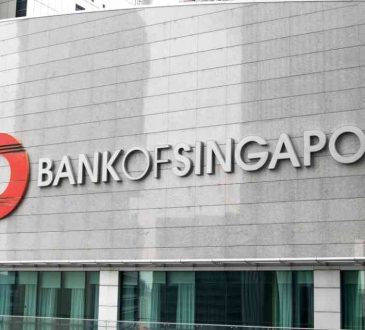How to Truly Improve Workforce Wellbeing

Workforce wellbeing, which declined this past year, is in need of an overhaul to make real progress. How its commonly approached now is as a separate initiative or Corporate Wellness program. These include one-off events such as yoga classes, meditation apps, lunch n’ learns, or trainings.
As the CEO of an Executive Coaching + Wellbeing firm, leaders and executives consistently share: these programs are a nice-to-have employee perk that don’t apply to them. Nor do they have time to participate. Underneath, they don’t feel like their wellbeing is prioritized, only their output is.
The problem isn’t the leaders’ perspectives around these programs. The issue is that in isolation, Corporate Wellness programs haven’t been shown to improve workplace wellbeing.
A recent study confirms this. In an assessment of 90 workplace interventions to improve wellbeing, Dr. William Fleming, a researcher at the Wellbeing Research Centre at the University of Oxford, found none of the offerings except one had any positive effect on wellbeing. The exception was: wellbeing improved for employees with the opportunity to do volunteer work.
How Corporate Wellness Programs Fall Short
While the Corporate Wellness Market is projected to increase annually, simultaneously, burnout is also rapidly on the rise, with about 50% of the workforce experiencing high levels of exhaustion and stress.
Unfortunately, Wellness programs often have low attendance or adoption rates. As RAND Research has shown, without an effective implementation strategy, they fail to deliver on their promises, having little effect on health care costs.
Why is that?
When organizations provide disjointed programs in isolation from the demands and culture of the workplace, they fail. Though well-intentioned, the programs are simply that: programs. They are not systemic solutions to drive individual and organizational health and wellbeing. They don’t address the role of the workplace itself in furthering a culture of burnout.
This highlights corporate wellness programs should not be considered the central strategy to improve workplace wellbeing. Equating one-off programs as the only way to attain workplace wellbeing won’t provide the results companies are seeking. However, they shouldn’t necessarily be abandoned, as long as they are approached as a way to support a comprehensive strategy.
If corporate wellness programs on their own aren’t the answer, then what is?
What to focus on instead
Organizations that truly want to improve organizational health and wellbeing must focus on it systemically and strategically. Wellbeing needs to be integrated as a foundation for leadership and organizational culture. This includes three pillars: Vital Leadership, Team Vitality, and Organizational Vitality.
Vital Leadership
For wellbeing to become integrated within the organization starts with leaders changing their mindset: to recognize wellbeing is foundational to leadership performance.
Vital Leadership gives leaders permission to serve themselves first. By building their vitality, they’ll access their full leadership capacity. When leaders foster their vitality, the inner physical, psychological, emotional and spiritual energy resources, they show up at their best and positively impact others. Vitality is on the opposite end of the spectrum of burnout.
Leaders have a lot of energy going out into the world. What about energy going in? Leaders can learn how to cultivate their own energy to meet the incessant demands they face. When leaders replenish their vitality, they have the inner resources to deliver on the outputs.
Prioritizing your wellbeing is how you get your main source of energy. You can start by building awareness of your own energy resources, including what fills and drains your energy and how to refuel. This is an individual experience. It is up to you to determine what energizes you every day.
Reflection Questions:
- What brings you physical, psychological, emotional and spiritual energy? Brainstorm to create a list, including things you are currently doing, used to do, or want to try.
- How could you integrate what gives you energy into your life more consistently?
- What’s one action you could take to refill your energy today?
Team Vitality
Leaders can foster a culture of team vitality by prioritizing team connection and team dynamics. Create the space to focus on the how: how we collaborate, communicate, interact, and complete the work. So often teams overemphasize the “what” teams produce. While a strong output is the ultimate goal, achieving the best results requires emphasizing “how” the work gets done.
How do you do this? A healthy team culture starts with the leader modeling the behaviors that promote wellbeing. Create the space in team meetings and offsites to attend to the how. Build strong relationships where you demonstrate you value the whole person, care about your team members’ energy resources and ensure they aren’t being depleted in the workplace.
Reflection Questions:
- How could you model and build healthy team culture?
- How could you create the space for team connection on a regular basis?
- How could you show you care about your team and their wellbeing: mentally, physically emotionally and spiritually?
Organizational Vitality
Organizational vitality creates an environment where everyone thrives in the workplace. Creating a healthy organizational culture, with foundations in trust and psychological safety, leads to organizational vitality.
What makes up organizational culture? When thinking of culture, the: mission, vision, purpose and core values are regularly included. These are the visible elements. There are also invisible elements, which are equally as important but aren’t always given attention. Invisible aspects include: norms, beliefs and practices. They drive how work gets done.
The culture must be experienced day-to-day to be most impactful. This includes rewarding employees for demonstrating behaviors that align with it. When individuals aren’t living the culture and being rewarded for the associated behaviors, then there is a disconnect.
For example, when leaders speak to their team about the importance of taking time to recharge from work, and then frequently expect their team to respond to emails during evenings and weekends, it sends a conflicting message. This can be based on a disconnect between the invisible and visible culture elements. The leader’s message is based on what the culture says it stands for—the visible aspects—yet, acts based on how the culture actually operates—the invisible aspects.
Culture makes an immense difference on individuals wellbeing in the workplace. To drive true workplace wellbeing requires a healthy culture starting at the top of the organization, with aligned visible and invisible elements.
Reflection:
- How could you cultivate a culture of wellbeing?
- How could the invisible aspects of culture more visibly foster wellbeing (norms, beliefs and practices)?
- What behaviors, related to the culture, would encourage organizational vitality?
It’s time to move beyond a one-off initiative or program approach to wellbeing by focusing on it systemically and strategically. Emphasize how to create organizations where everyone thrives to advance workforce wellbeing.
Imagine an organization full of employees and leaders with an abundance of vitality—of energy. Then, everyone would prioritize their wellbeing every day, including during challenging times. Then, organizations would have healthier employees and leaders, lower rates of burnout, and lower healthcare costs. Then, there would be more high performing leaders, positively impacting their teams and organizations, creating extraordinary results.
Written by Dr. Jamie Shapiro.
Have you read?
Revealed: Highest-paid college football coaches, 2024.
Revealed: These are the Deadliest Cars you can drive in the US, 2024.
Revealed: Words that weren’t in use before the 1990s but are now commonly used.
Ranked: Countries with the lowest petrol prices, 2024.
Revealed: The World’s Safest Airlines To Fly In 2024.
Add CEOWORLD magazine to your Google News feed.
Follow CEOWORLD magazine headlines on: Google News, LinkedIn, Twitter, and Facebook.
This report/news/ranking/statistics has been prepared only for general guidance on matters of interest and does not constitute professional advice. You should not act upon the information contained in this publication without obtaining specific professional advice. No representation or warranty (express or implied) is given as to the accuracy or completeness of the information contained in this publication, and, to the extent permitted by law, CEOWORLD magazine does not accept or assume any liability, responsibility or duty of care for any consequences of you or anyone else acting, or refraining to act, in reliance on the information contained in this publication or for any decision based on it.
Copyright 2024 The CEOWORLD magazine. All rights reserved. This material (and any extract from it) must not be copied, redistributed or placed on any website, without CEOWORLD magazine' prior written consent. For media queries, please contact: info@ceoworld.biz
SUBSCRIBE NEWSLETTER








